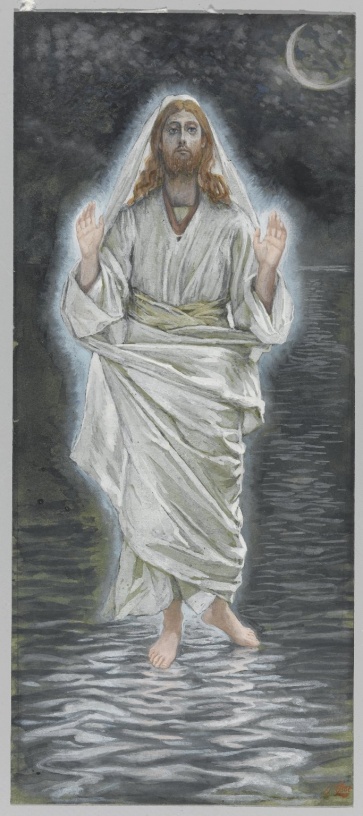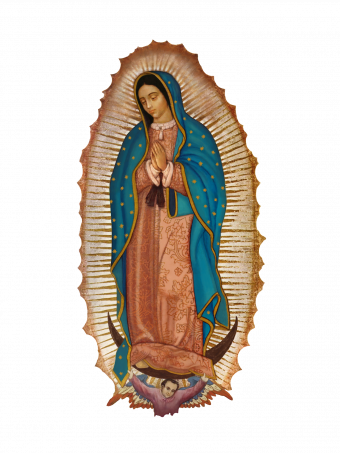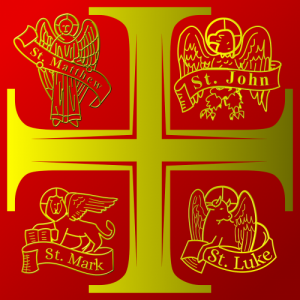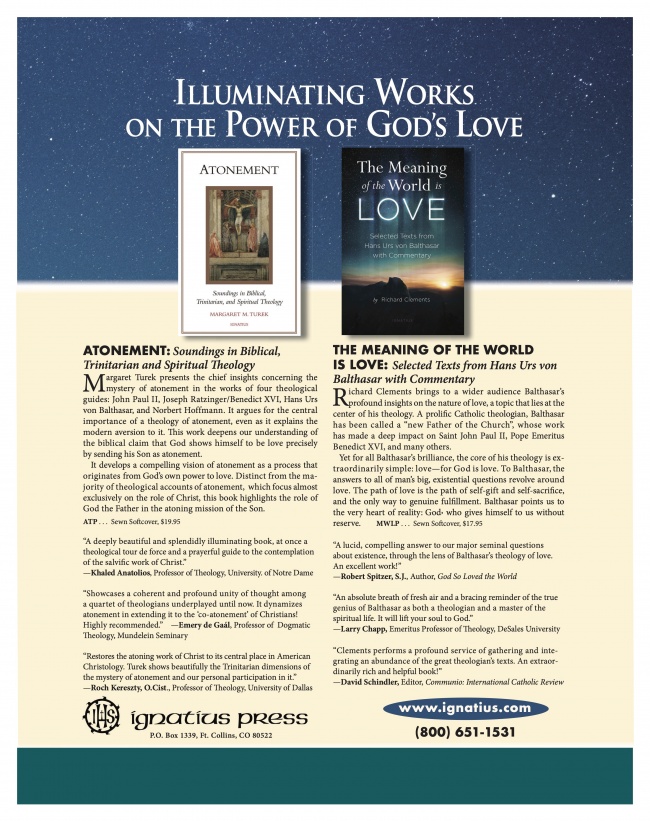The Miracles of Jesus
 One of the most characteristic features of Jesus’ earthly ministry was his performance of miracles, particularly healings and exorcisms.
One of the most characteristic features of Jesus’ earthly ministry was his performance of miracles, particularly healings and exorcisms.
Editor's Reflections: Where There Is Great Love, There Are Miracles
 In Death Comes for the Archbishop, Willa Cather’s sweeping novel describing the evangelistic efforts of the first archbishop of Santa Fe, the author vividly describes the archbishop’s reaction upon hearing of the miraculous vision of Our Lady of Guadalupe.
In Death Comes for the Archbishop, Willa Cather’s sweeping novel describing the evangelistic efforts of the first archbishop of Santa Fe, the author vividly describes the archbishop’s reaction upon hearing of the miraculous vision of Our Lady of Guadalupe.
Youth & Young Adult Ministry: Free to Hope
As I write this article, I'm nursing the tail end of a mild bout of COVID-19. I don’t share that for pity but to point out how much the world has changed in the past few years. Before this decade, I didn't know what a novel coronavirus was. Everything I understood about pandemics was mainly picked up from disaster movies. Social distancing was only a dream my introverted wife possessed in her heart. And the virus that demanded fear as it first swept across the planet is now so common that it's possible to write an article while infected. Though we can celebrate the medical advances and technology that have helped us fight COVID-19, as the dust still settles on the pandemic, we are just now getting a real glimpse of how all this has affected today’s youth.
The CDC recently released a study revealing that over one-third of high schoolers have experienced poor mental health since the pandemic. At the same time, almost half acknowledge a persistent feeling of sadness or hopelessness.[i] Perhaps these stats are surprising, or maybe they are not; teens’ general mental health and well-being were on the decline long before COVID-19. However, we would be remiss if we failed to acknowledge the unique needs that young people now face. Though vaccinations and vitamins may combat the virus, it will take something far more powerful to heal these more profound ailments now facing teens’ interior life. To find the answers to the deepest sorrows of this life, we must turn our minds to the next one. The virtue of hope helps us do just that.
[i] Centers for Disease Control and Prevention, “New CDC data illuminate youth mental health threats during the COVID-19 pandemic,” CDC Newsroom, March 31, 2022, https://www.cdc.gov/media/releases/2022/p0331-youth-mental-health-covid-...
Applied Theology of the Body: The Transformative Power of Marital Consent and the Meaning of Marital Sex
The Theology of the Body (TOB) catechesis[i] culminates with profound teachings on responsible parenthood and a vigorous defense of Humanae vitae, but St. John Paul II equally proclaimed the depth and importance of the unitive aspect of marriage. In fact, nearly half of the TOB reflections are based directly on Jesus’ teachings on the indissolubility of marriage (TOB 1–23, based on Mt 19) and the monogamy of marriage (TOB 24–63, based on Mt 5). While emphasizing the inseparability between the procreative and unitive aspects, a key teaching of Humanae vitae, St. John Paul II also provided a profound way to understand the enormous personal value of unity for man and woman precisely as persons made in the image of God.
By highlighting the meaning of marital unity beyond the juridical level through his focus on the total self-giving and personal communion at the center of Christian marriage, he also gave us some clear criteria for understanding the essential difference between marital sex and premarital sex. This installment of the series describes that essential difference and why our theology says that couples must wait for marriage to begin their sexual life together.
[i] John Paul II, Man and Woman He Created Them: A Theology of the Body, trans. Michael Waldstein (Boston: Pauline Books and Media, 2006), hereafter cited parenthetically in text as TOB.
The Truth for Which the World Longs
Don’t scientists, believers, nonbelievers, liberals, and conservatives alike all rejoice in the splendor of creation? Don’t we all wonder about stars that shine lightyears away? About the depths of the ocean swarming with fluorescent fish and star-shaped creatures? About the hummingbird whose wings flap in song while she drinks nectar to satiety? Not only do we experience joy and wonder as we contemplate creation, we also have an innate longing to discover. We long to discover the mysteries of creation and thus uncover the mysteries of God. And this, I’d argue, is true for most people—regardless of their religious belief, nonbelief, or affiliation.
Why is it important to recognize this universal appreciation of nature? God is an artist, and creation is his artwork.[i] My cousin, who was a seminarian at the time, described this idea to me years ago while we walked along the coast of Maine, amid misty harbor air and abundant wildflowers. Just as we can learn about artists from their work, we also can learn about God from his creation. How exciting, then, that so many people are captivated by nature; so many spend their lives studying creation. For many, evangelization might begin with these moments of joy and wonder.
[i] Robert Barron, “God as Artist,” Angelicum 80, no. 2 (February 1, 2003): 403–16.
RCIA and Adult Faith Formation: Christian Initiation for Families: A Rescue Mission of Mercy
Having realized the growing need for a process of Christian Initiation for Families at our parish that serves unbaptized children of catechetical age and their parents, we have developed, implemented, and continue to fine-tune our rescue mission using a family approach for our mid-sized parish. One of the adjustments made is we now refer to the process as “Christian Initiation for Families” rather than “RCIA Adapted for Families.” “RCIA” is insider language, and, since we are hoping to attract entire families along with their unbaptized children, we realized that although they may not know what RCIA is, they will usually understand the title “Christian Initiation.”
In issues 7.1 and 7.2 of The Catechetical Review, there is a two-part article titled “RCIA Adapted for Families: It’s All About the Parents.”[1] Indeed, it is. The value of evangelizing parents is confirmed over and over for us as we continue to unfold the crucial mission of the Church in this, our time in salvation history.
Part one of the article spoke of the grace of the sacraments lying dormant in the souls of the parents due to a lack of response. It also considered the term quasi-catechumen coined by Pope St. John Paul II in Catechesi Tradendae[2] and used in the Directory for Catechesis,[3] identifying “adults who, although they have been baptized, have not been adequately formed.” The directory then went on to emphasize the effectiveness of using a “catechesis of catechumenal inspiration,” as stated in the Directory, “for those who have received the sacraments of initiation but are not yet sufficiently evangelized or catechized, or for those who desire to resume the journey of faith.”[4]
What we have discovered in practice is that although it is true the parents have not been “sufficiently evangelized or catechized,” they do not necessarily desire to resume their journey of faith when bringing their older children for baptism. The desire for relationship with Christ implanted by God in their souls needs to be enkindled. In other words, although we can be certain the desire is present, they do not perceive it. Nor will they, unless it is awakened by others who are already burning with this desire.
[1] Lori Smith, “RCIA Adapted for Families—It’s All About the Parents,” The Catechetical Review 7.1 (January-March, 2021), and 7.2 (April-June, 2021).
[2] John Paul II, Catechesi Tradendae, 44.
[3] Pontifical Council for the Promotion of the New Evangelization, Directory for Catechesis (Washington, DC: United States Conference of Catholic Bishops, 2020), 258.
[4] Directory for Catechesis, 62, emphasis original.
RICA & Formación en la Fe para Adultos: Ritos mayores, gracia mayor: agua viva para el camino del RICA
 En el Ritual de la Iniciación Cristiana de Adultos, hay varios aspectos de la formación y muchas piezas móviles que contribuyen todos a la formación general de los catecúmenos y candidatos.
En el Ritual de la Iniciación Cristiana de Adultos, hay varios aspectos de la formación y muchas piezas móviles que contribuyen todos a la formación general de los catecúmenos y candidatos.
Evangelization and Personal Freedom
If someone is married, in love, or has ever been in love, they can likely tell you when they knew they were in love and, more importantly, when they knew their significant other was in love with them. It’s also likely that one of the individuals fell in love first. Their heart had been moved and they had “arrived” to love. After having arrived, they had to do one of the hardest things: they had to wait. Why wait? Well, because love cannot be rushed, and it certainly cannot be forced. It must profoundly respect the freedom of the other because a love that is forced is no love at all—it is coercion. The human heart is only meant to open from within: to make a free choice to love.
Jesus spoke often about the heart of man. Speaking of the Pharisees he says, “This people honors me with their lips, but their heart is far from me” (Mt 15:8) and again, “But what comes out of the mouth proceeds from the heart and this defiles a man” (Mt 15:18). While for some it can seem like faith is nothing more than a list of doctrines and creeds, and conversion is nothing more than accepting “new teachings”; from the beginning, faith, conversion, and the work of bringing the Gospel to others, that is evangelization, have always been about the heart.
Evangelization, from the Catholic perspective, is “the carrying forth of the Good News to every sector of the human race so that by its strength it may enter into the hearts of men and renew the human race.”[1] From this definition, we can see that there are necessary aspects to authentic evangelization. First, there must be a proclamation of the Gospel. This speaks to the missionary mandate of the Church to bring the Good News to the whole world, not only in action but also in preaching and proclaiming. Scripture makes clear to us this mandate as we read Jesus’ final command, the last thing he spoke to his disciples before ascending into heaven. We call this final command the Great Commission, and we read one account of it in Matthew’s Gospel:
And Jesus came and said to them, “All authority in heaven and on earth has been given to me. Go therefore and make disciples of all nations, baptizing them in the name of the Father and of the Son and of the Holy Spirit, teaching them to observe all that I have commanded you; and behold, I am with you always, to the close of the age.” (Mt 28:18–20, emphasis added)
However, this “carrying forth of the Good News” is not an end in and of itself. Disciples of Christ do not proclaim the Gospel for the sake of its proclamation, just to speak the words. It is done to accomplish another end—namely, entering “into the hearts of men and renew[ing] the human race.” But we remember that the human heart must never be coerced, neither into love nor into belief. Instead, it must be approached with all its freedoms intact. This means that if reaching the human heart is the primary goal of authentic Catholic evangelization, then these efforts must always profoundly respect the other and his or her personal freedom. If this evangelistic atmosphere is not present, if proclaiming the Gospel is not being carried out in a way that profoundly respects the freedom of the other, then it is not authentic evangelization.
Lastly, we see that the strength by which this goal is achieved is not our own but belongs to the Gospel itself as we read, “so that by its strength it may enter into the hearts of men” (emphasis mine). When we evangelists remember that the Gospel has an intrinsic power, we experience freedom as well. We truly become “God’s fellow workers” (1 Cor 3:9), as Paul references in his letter to the Corinthians. Of course, we will aim to use every one of our God-given and developed gifts, but we will also make ourselves docile and open to the power of the Holy Spirit and the Gospel working through us. We will immerse ourselves in God’s Word, understanding that his Word contains power beyond any words of men. The freedom of the evangelist to become a vessel of God’s power through the Gospel message is necessary for authentic evangelization.
Editor's Reflections: “Freedom For” and “Freedom From”
AD: Illuminating Works on the Power of God's Love
This is a paid advertisement in the October-December 2022 issue. Advertisements should not be viewed as endorsements from the publisher. To find out more about these books, go to https://ignatius.com or call 800-631-1531.



